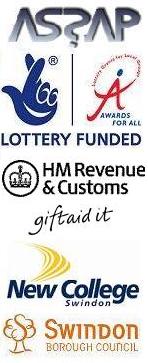Forgetting about Ghost Photographs
PSI’s Dave Wood takes a look at whether camera use during paranormal investigations has seen its day.
The ‘ghost photograph’ has a long and distinguished history. From the Brown Lady to the Tulip Staircase, the practice and celebration of Ghost Photography is almost as old as the art of photography itself.
The decades produced a handful of interesting – though explicable – snaps, amongst a plethora of fakes. Whilst the more famous ghost photos are supposedly taken whilst the photographer is going about their daily business, the possibility of ghosts caught on film has inspired hopeful investigators to carry a camera with them at all times.
In the days of 35mm cameras ghost photography was an interesting aside to the investigation experience. Since the proliferation of cheap digital cameras, ‘paranormal photography’ seems to have become something of an obsession in much of this field of study.
Digital cameras carry obvious benefits: with no developing costs and instant viewing, hundreds can be taken with ease at any given investigation. As everyone knows, photographs occasionally produce unintended but impressive flaws in the process. The proliferation in numbers of photographs taken during an investigation has, purely because of the numbers involved, thrown up a greater number of such unusual snaps.
Most sensible researchers have wised up to the effects of low lighting, airborne particles and lens flare, but so many of us still spend an inordinate amount of time analysing ‘odd photos’. Few of us have a the in-depth technical knowledge of cameras to be able to explain every spooky photo, but there are certainly a few knowledgeable researchers who can provide compelling explanations for every photograph sent in their direction.
In years of research – and the good fortune to be associated with people with decades of experience in finding the causes of odd photographs I have come to the conclusion that ‘paranormal photography’ is not worth the time devoted to it. Certainly over years of research and many thousands of photos analysed, I have learnt that even the most compelling photographs are simply the result of freak camera artefacts.
Some might argue that you ‘might as well’ have a go at paranormal photography, as there is little else to occupy ones time during investigations. My response is that photography is simply one level of a mountain of worthless methods used to investigate the paranormal – including EVP, mediumship, trigger objects and 90% of equipment used – that are simply distracting us from what is really going on.
Remove all these unproven methods and tools and what do you have left? Not a great deal, on the surface. But what we can lack in toys and distractions we can make up for in a meaningful scientific method. Try focussing on what is ‘normal’ rather than what is ‘paranormal’ and we can strip out the fools gold of misattribution and hopefully be left with something more meaningful to focus our research on.
We’ve had decades of the traditional way of doing things, and nearly a decade of TV-inspired nonsense. The results have been largely meaningless. It’s time to give a good method, rather than toys and distractions, a chance.
Handpicked links
- Best Non Gamstop Casinos 2025
- UK Non Gamstop Casinos
- Betting Sites UK
- Sites Not On Gamstop
- Non Gamstop Casino Sites UK
- Non Gamstop Casino UK
- Non Gamstop Casino Sites UK
- Non Gamstop Casinos
- Casino Sites Not On Gamstop
- Best Non Gamstop Casinos
- Gambling Sites Not On Gamstop
- Casino Sites Not On Gamstop
- Non Gamstop Casino
- Best Casino Sites Not On Gamstop 2025
- UK Online Casinos Not On Gamstop
- UK Casinos Not On Gamstop
- Slots Not On Gamstop
- Non Gamstop Casinos UK
- Non Gamstop Casino
- UK Casino Sites Not On Gamstop
- Casino Sites In UK
- Sites Not On Gamstop


